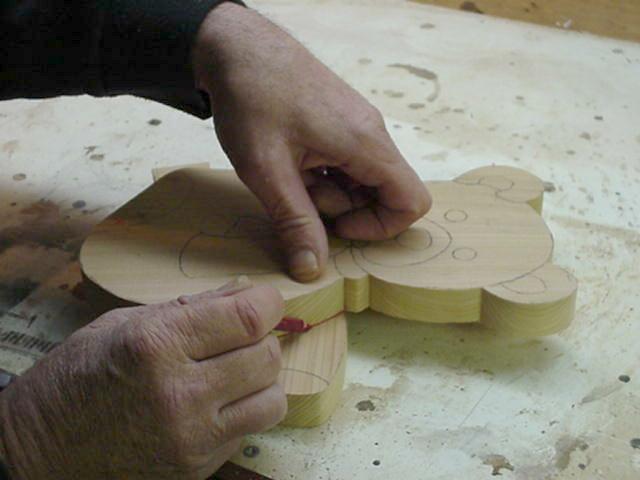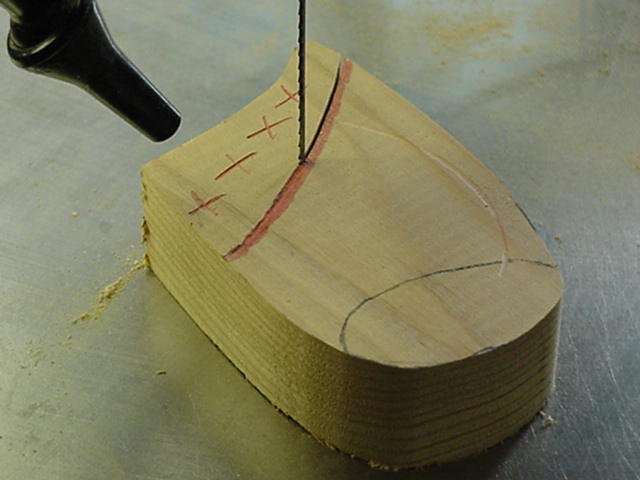With Teddy, we started with the head/body combo. That’s part number one. Now let’s add a second part, his left arm (his left).
Check the pattern. Notice that Teddy’s left arm (and leg) are away from the viewer – they seem to disappear behind his body. Very well. That’s how we’ll make the inlay, with the body on top.
The pattern for the arm has already been transferred to the wood. Cut out the arm, leaving extra wood at the joint end, the end where the arm joins the body.
Now to the scrollsaw. Complete Teddy’s left arm joint by sawing carefully along the waste side of the inlay line. If you traced and sawed accurately, the arm will butt tight against the body (see photo below).
Now we have two parts – a body and a left arm. The third part, Teddy’s left leg, also seems to disappear behind his body. So it is treated in exactly the same fashion as the arm. Cut the leg out, leaving extra wood at the hip. Place the body on top of the leg, position the parts carefully and trace the inlay line. Saw carefully on the waste side of the inlay line. Now Teddy has three parts.

Teddy's left arm. Notice extra wood (xxx) for the joint

Tracing Teddy's left arm joint.

Sawing along the waste (xxx) side of the inlay line (line width exaggerated).
You can also "position parts carefully" by using the pattern. Position one part on the pattern and place its mating part on top of it. Align by eyeball and trace the inlay line. Both of these positioning methods work. Intarsians often combine them.

Marking the inlay for Teddy's right arm.


